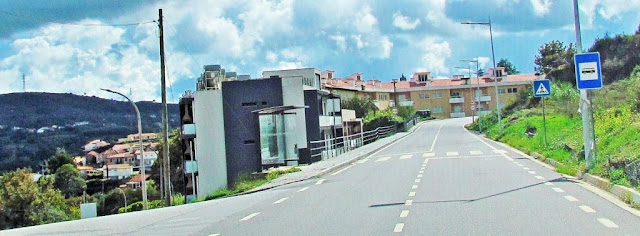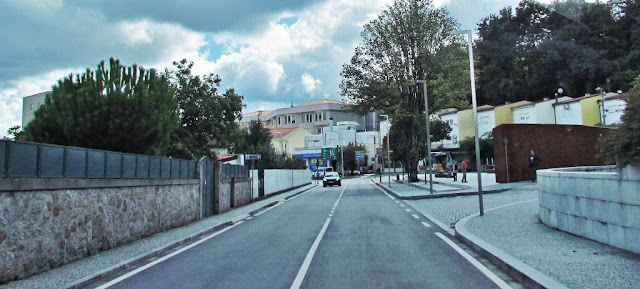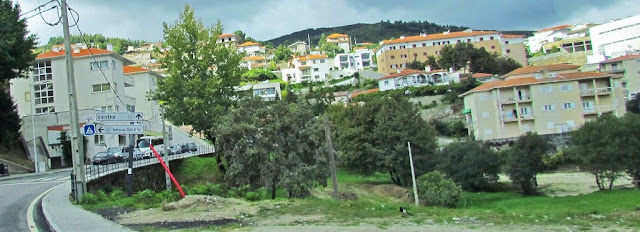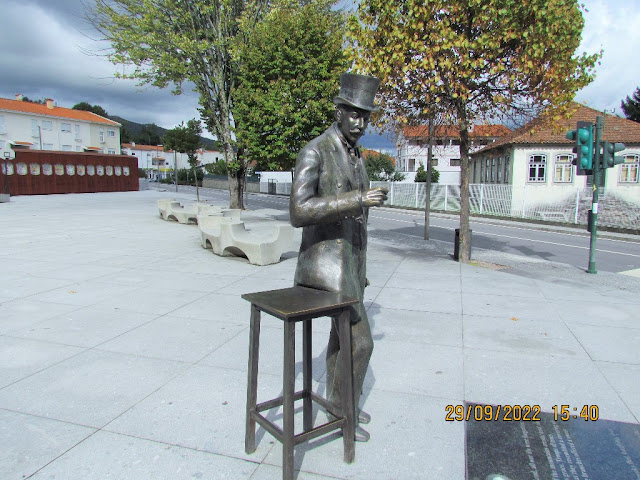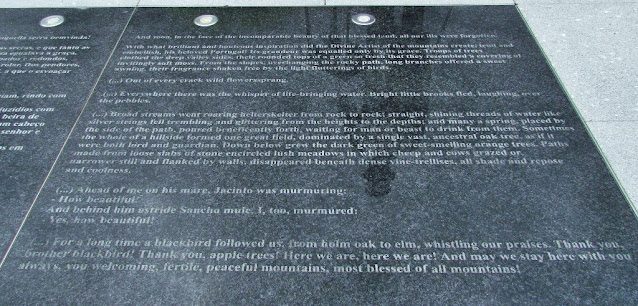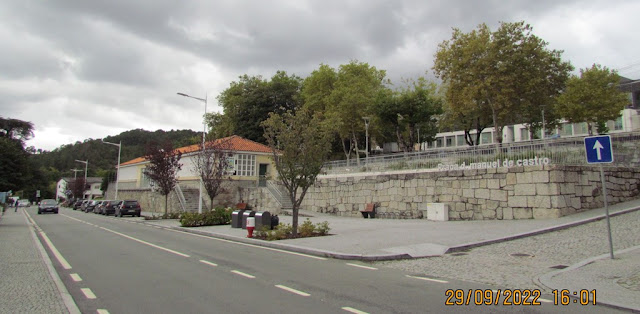BAIÃO
N 41.15730; W 8.03858
It is the seat of the municipality of Baião with an area of 174.53 km² and 20,522 inhabitants (2011), subdivided into 14 parishes;
Ancede e Ribadouro (town of Ancede)
Baião (Santa Leocádia) e Mesquinhata
Campelo e Ovil (town of Baião)
Frende
Gestaçô
Gove
Grilo
Loivos da Ribeira e Tresouras
Loivos do Monte
Santa Cruz do Douro e São Tomé de Covelas
Santa Marinha do Zêzere (town)
Teixeira e Teixeiró
Valadares
Viariz
The municipality is limited to the north by the municipalities of Amarante and Santa Marta de Penaguião, to the east by Mesão Frio, Peso da Régua, to the south by Resende and Cinfães and to the west by Marco de Canaveses. The municipality includes 3 villages: Baião, Ancede, and Santa Marinha do Zêzere.
Geography
Baião is the municipality with the highest percentage of green area and forest in the entire district of Porto (63.5 percent of the territory) and has in its territory natural resources of rare beauty, such as Serra da Aboboreira, Serra do Marão, the Serra do Castelo de Matos or the Douro, Teixeira and Ovil rivers.
Patrimony
Anta da Aboboreira (also known as Anta de Chã de Parada, Dolmen da Fonte do Mel, Casa da Moura de S. João de Ovil, Casa dos Mouros, and Cova do Ladrão), located in the Serra da Aboboreira in the parish of Ovil: classified as National Monument and built during the first half of the 3rd millennium BC. C., this prehistoric funerary monument is part of a set of four other examples belonging to the so-called megalithic necropolis of Serra da Aboboreira. The tumulus, coated with stone material, is inserted in a tumulus of earth about 25 m in diameter. The chamber, with a polygonal plan, is made up of eight lateral pillars and one cover, the latter of considerable dimensions. The corridor, sub-rectangular in plan, is relatively short (about 3.70 m long). One of the peculiarities of this mound lies in the presence of a set of paintings on its pillars, executed in red, comprising stelliform and circular motifs, in addition to a sub-rectangular with a trapezoidal base and a curved lateral appendix
Monastery of Ancede
The set consists of the Monastery of Santo André de Ancede, the Chapel of Nossa Senhora do Bom Despacho, and the front yard.
The origins of the Monastery of Santo André de Ancede date back to the 12th century and the oldest known reference, from 1120, concerns its connection to the Canons Regular of Saint Augustine. For several centuries this monastery held a considerable land heritage linked to wine production, which allowed it to benefit from great economic power. However, in the mid-16th century, little was left of that golden age and the monastery entered a period of decay, with degraded facilities and a very small number of religious. In 1560 it came to depend on the monastery of São Domingos de Lisboa and, from then on, several work campaigns were carried out with the aim of recovering the architectural complex. The church was rebuilt, developing into three naves separated by round arches, with a wooden ceiling. A wide triumphal arch, with two side altars, connects this space with that of the chancel, where the main altarpiece gains special importance, in gilded carving with a large tribune. Contemporary to this altarpiece, in a national style, are certainly the valances that are found over the windows and the triumphal arch. The main facade, in stonework, which corresponds to the side of the nave, has a portal with a straight lintel topped by a niche with a triangular pediment. With the extinction of the Religious Orders, the monastery was sold at public auction, being acquired by the Viscount of Vilarinho de São Romão. The chapel and the church passed, in 1932, to the parish of Ancede. Currently, and since 1985, the monastery belongs to the Municipality of Baião. The chapel of Nossa Senhora do Bom Despacho, next door was built in 1731 and displays, on the portal dating from 1735, the coat of arms of the Dominicans. In Rococo language, it features, inside, the main altar and six sides, with representations of scenes from the life of Christ.
Baião Treasure, deposited at the National Museum of Archeology in Lisbon: consisting of a 52.5 cm articulated necklace, dating from the Iron Age (6th-4th centuries BC), two pairs of earrings, dating from the Old Iron Age ( 7th-6th centuries BC), a choker and twelve buttons, all in gold.
A few years ago, in Frende, an important altar was found, composed of several altars, decorated with ceremonial scenes, seeming to witness shamanic or druidic scenes. Yet another of the same kind was found at Quinta de Mosteirô, in Ancede.
The set consists of the Monastery of Santo André de Ancede, the Chapel of Nossa Senhora do Bom Despacho, and the front yard.
The origins of the Monastery of Santo André de Ancede date back to the 12th century and the oldest known reference, from 1120, concerns its connection to the Canons Regular of Saint Augustine. For several centuries this monastery held a considerable land heritage linked to wine production, which allowed it to benefit from great economic power. However, in the mid-16th century, little was left of that golden age and the monastery entered a period of decay, with degraded facilities and a very small number of religious. In 1560 it came to depend on the monastery of São Domingos de Lisboa and, from then on, several work campaigns were carried out with the aim of recovering the architectural complex. The church was rebuilt, developing into three naves separated by round arches, with a wooden ceiling. A wide triumphal arch, with two side altars, connects this space with that of the chancel, where the main altarpiece gains special importance, in gilded carving with a large tribune. Contemporary to this altarpiece, in a national style, are certainly the valances that are found over the windows and the triumphal arch. The main facade, in stonework, which corresponds to the side of the nave, has a portal with a straight lintel topped by a niche with a triangular pediment. With the extinction of the Religious Orders, the monastery was sold at public auction, being acquired by the Viscount of Vilarinho de São Romão. The chapel and the church passed, in 1932, to the parish of Ancede. Currently, and since 1985, the monastery belongs to the Municipality of Baião. The chapel of Nossa Senhora do Bom Despacho, next door was built in 1731 and displays, on the portal dating from 1735, the coat of arms of the Dominicans. In Rococo language, it features, inside, the main altar and six sides, with representations of scenes from the life of Christ.
Baião Treasure, deposited at the National Museum of Archeology in Lisbon: consisting of a 52.5 cm articulated necklace, dating from the Iron Age (6th-4th centuries BC), two pairs of earrings, dating from the Old Iron Age ( 7th-6th centuries BC), a choker and twelve buttons, all in gold.
A few years ago, in Frende, an important altar was found, composed of several altars, decorated with ceremonial scenes, seeming to witness shamanic or druidic scenes. Yet another of the same kind was found at Quinta de Mosteirô, in Ancede.
💓💓💓💓💓
Cête;
Maia;
PORTO - WHERE THE RIVER KISSES THE SEA;PORTO - Sao Bento Train Staion + Public
Transport in Oporto Metropolitan Area;
PORTO - PORTO ESSENTIALS I;
PORTO - PORTO ESSENTIALS II;
PORTO - PORTO ESSENTIALS III;
PORTO - PORTO ESSENTIALS IV;
Póvoa do Varzim;
💓💓💓💓💓
Return to mainland Portugal &
the Azores and Madeira islands





